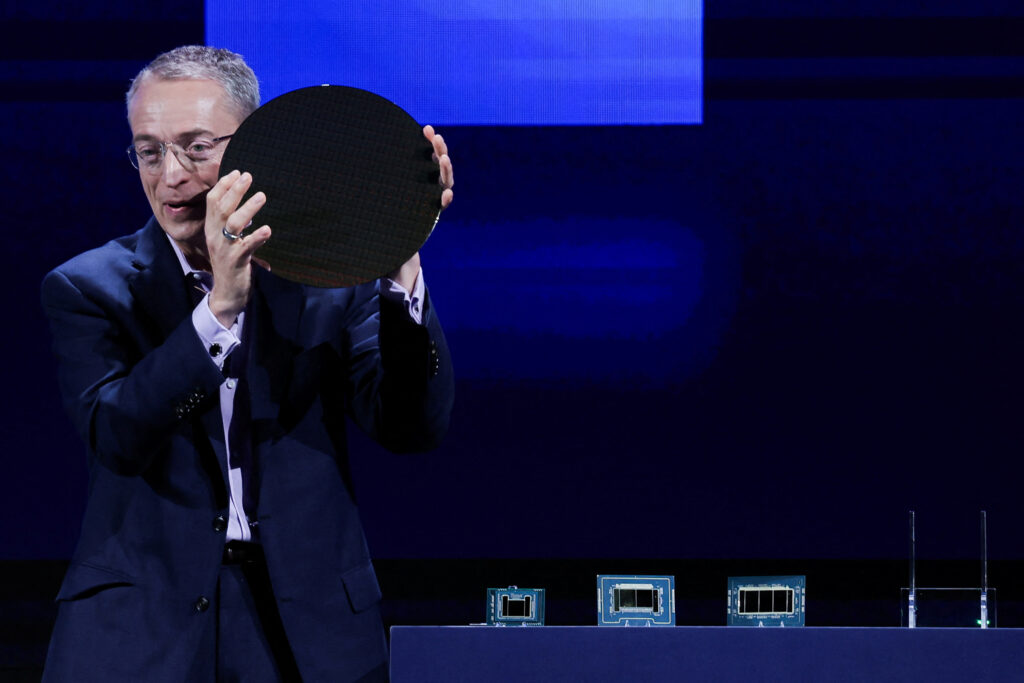Intel unveiled its next-generation Xeon server processors at the Computex trade fair in Taipei. The launch signifies Intel’s bid to regain its foothold in the competitive data center market. With the sixth-generation Xeon chips, Intel aims to address the challenges posed by rivals like AMD, who have been steadily gaining market share. These new processors come in two main variants: a high-performance model and an efficiency model, catering to diverse computing needs.
The efficiency model is particularly noteworthy for its significant performance improvements while consuming less power. Intel claims that compared to its second-generation chips, the efficiency model requires approximately 67% fewer server racks, making it ideal for tasks such as media serving, website hosting, and database operations. During the presentation, Intel CEO Pat Gelsinger emphasized the performance enhancements and energy efficiency achieved with the new processors.
In addition to the Xeon processors, Intel introduced the Gaudi 3 artificial intelligence accelerator chips. These chips are positioned as a cost-effective alternative to competing products from AMD and Nvidia. Intel revealed that the Gaudi 3 accelerator kit, comprising eight AI chips, is priced at approximately $125,000, making it a compelling option for businesses seeking AI computing solutions. Gelsinger highlighted the affordability and performance advantages of the Gaudi 3 chips compared to competitors’ offerings.
The launch of the Xeon processors and Gaudi 3 AI chips reflects Intel’s commitment to innovation and competitiveness in the data center market. Intel acknowledges the challenges posed by AMD, whose use of Taiwan Semiconductor Manufacturing Co (TSMC) for chip fabrication has allowed them to gain traction in the market. By introducing advanced technologies and competitive pricing, Intel aims to regain its position as a dominant player in the data center segment.
Furthermore, Intel provided insights into its upcoming products, including the Lunar Lake laptop chip. Set to ship in the third quarter, Lunar Lake boasts 40% lower power consumption and a more powerful AI processor, enhancing the performance and efficiency of laptops. Gelsinger expressed enthusiasm about the widespread adoption of Lunar Lake-powered PCs, emphasizing Intel’s commitment to integrating AI capabilities into computing devices.
Looking ahead, Intel outlined its roadmap for future chip releases, including Arrow Lake and Panther Lake. These upcoming chips demonstrate Intel’s ongoing commitment to innovation and technological advancement. Gelsinger emphasized the collaborative efforts with TSMC, acknowledging their contributions to core technologies utilized in Intel’s products.
Overall, Intel’s announcements at Computex underscore its determination to regain market share and maintain competitiveness in both server and consumer computing segments. By focusing on performance, energy efficiency, and competitive pricing, Intel aims to solidify its position as a leading provider of semiconductor solutions in the rapidly evolving technology landscape.
At the heart of Intel’s presentation was the promise of performance without compromise. CEO Pat Gelsinger’s emphasis on the efficiency and power of the new processors underscored Intel’s commitment to delivering tangible benefits to its customers. It wasn’t just about raw computing power; it was about efficiency, scalability, and ultimately, value.
But Intel didn’t stop there. Recognizing the growing importance of artificial intelligence in driving innovation across industries, the company also unveiled its Gaudi 3 artificial intelligence accelerator chips. Positioned as a cost-effective alternative to competing products, these chips signaled Intel’s intent to stake a claim in the burgeoning AI market. The competitive pricing of the Gaudi 3 accelerator kit, combined with its performance capabilities, positioned it as an attractive option for businesses looking to leverage AI technologies without breaking the bank.
However, Intel’s ambitions extended beyond the data center. The company also provided a glimpse into the future of laptop computing with its Lunar Lake chip. Boasting 40% lower power consumption and a more potent AI processor, Lunar Lake represented a significant leap forward in mobile computing capabilities. Gelsinger’s enthusiasm about the widespread adoption of Lunar Lake-powered PCs reflected Intel’s commitment to pushing the boundaries of innovation and empowering users with cutting-edge technology.
